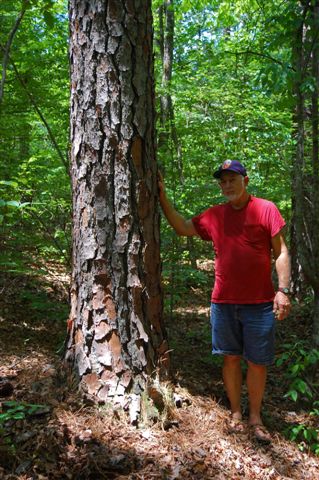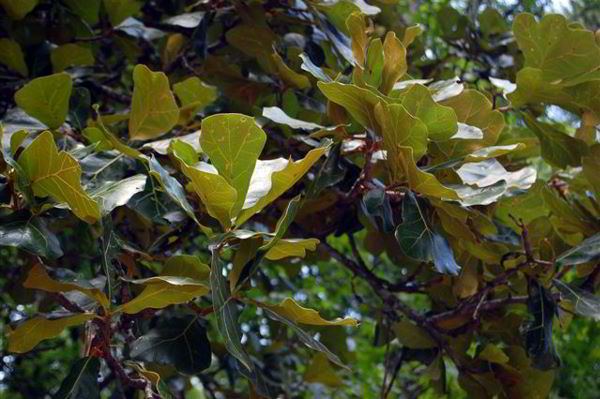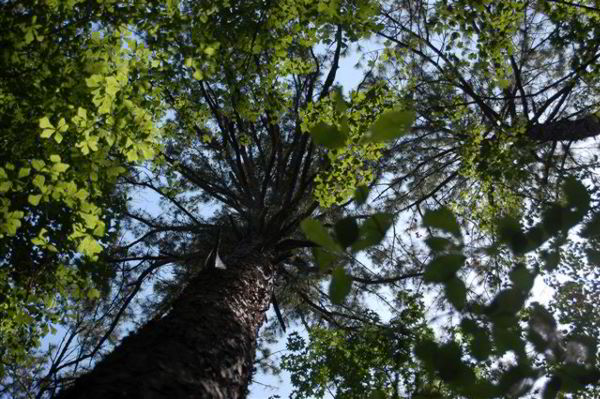|
==============================================================================
TOPIC: Sumter National Forest_Long Cane District_SC
http://groups.google.com/group/entstrees/browse_thread/thread/8655bdbe6b7fe30b?hl=en
==============================================================================
== 1 of 3 ==
Date: Sun, Jul 6 2008 9:59 pm
From: James Parton
ENTS,
Last week during my 4th of July holiday I visited my dad, Earl
Parton who lives in Lowndesville SC. Friday morning we went into the
Long Cane District of Sumter National Forest where he has hunted
deer in the past. He said he had seen some dizzyingly high pines
there and took me in to see if we could find them. The forest here
is dominated by Loblolly pines and a smaller number of Slash pines.
Oak of various species were here as well as Sweetgum, Sourwood, Elm,
Sycamore, Shortleaf pine and even a few Tuliptree. Shagbark Hickory
were really common here. Unlike my forests back home, I found no
Rhododendron, White Pine or Pitch Pine. While I was measuring some
big Loblollies dad found a well used deer trail and he intends to
return to hunt the area this coming fall.

Loblolly Pine
The Modoc ( Stevens Creek Trail ) passes through a part of this
forest and I intend to return here and check this trail out. We
accessed the forest just outside of Modoc.

Blackjack Oak
Can anyone identify the Oak pictured here? It reminds me of a
Post Oak but its leaves are shaped slightly different than most I
have seen. Dad said he thought it was a Post Oak. I thought it was a
type of Magnolia when I first seen it, with those thick dark leaves.
Mentioning Post oaks I measured Howard Hannah's oak to be 57.02 feet
tall.
http://www.nativetreesociety.org/fieldtrips/south_carolina/hannah/hannah_oak.htm
http://www.fs.fed.us/r8/fms/forest/about/lc.shtml
http://www.fs.fed.us/r8/fms/forest/about/lcmap.shtml
http://www.fs.fed.us/r8/fms/rec/TSCanoe.pdf
While seaching the forest for some Palmettos that dad had seen in
the past, we noticed how dry the forest was. Some understory plants
were obviously being stressed by the drought.

I wonder if any other ent has explored this area? Jess Riddle
has done some exploring in upstate SC and I wondered if he has been
here.
Loblolly Pine
CBH Height
5' 3" 99.40'
5' 4" 102.75'
5' 8 1/2" 99.82'
7' 9" 113.39'
7' 7" 106.84'
7' 7" 102.78
7' 0" 109.42'
6' 7"
White Oak
6' 6" 99.46
James Parton
== 2 of 3 ==
Date: Mon, Jul 7 2008 4:05 am
From: Randy Brown
maybe blackjack oak.
http://www.cas.vanderbilt.edu/bioimages/species/frame/quma3.htm
== 3 of 3 ==
Date: Mon, Jul 7 2008 4:53 am
From: "Will Blozan"
James,
Blackjack looks right. Slash pine? I don't think ENTS has many if
any slash
pine measurements.
Will
== 2 of 6 ==
Date: Mon, Jul 7 2008 7:07 am
From: James Parton
Will,
Most of the larger trees I saw there were Loblollies, that is if my
id'ing them is right. Lobs have shorter needles than Slash does and
a
pricklier cone that persists on the trees for a longer period of
time.
The bark also appears blockier than the Slash pines do. I have
noticed
that the needles on both Loblolly and Slash pines are longer on
young
trees than on older ones. I wonder why that is?
I am surprised that Jess or Larry have not measured any Slash pines.
I
am sure given due time I will.
James P.
== 3 of 6 ==
Date: Mon, Jul 7 2008 11:12 am
From: "Jess Riddle"
James,
I've spent limited time in that area, but did make one post
http://www.nativetreesociety.org/fieldtrips/south_carolina/turkey_creek_trail.htm
I agree, the oak looks like blackjack. I saw only loblolly and
shortleaf pines in the area, and range maps of slash do not show the
species quite making it into that area. I recently learned that
southern shagbark hickory is much more common than standard shagbark
in that area.
Jess
== 4 of 6 ==
Date: Mon, Jul 7 2008 6:12 pm
From: Larry
James, I measured some slash pines in Tallahala at Bienville
National
Forest in Dec 2006 to around 127' and some Tall Loblollys also.
http://www.nativetreesociety.org/fieldtrips/mississippi/talahalla/talahalla_bienville.htm
Larry
== 5 of 6 ==
Date: Mon, Jul 7 2008 8:27 pm
From: James Parton
Jess,
Loblolly is definitely dominant. I saw the range map on Slash pine
also, but I believe tree plantations have introduced Slash pine into
that area.
I saw some Shortleaf that was nearly as tall as the Loblollies. Most
of the Slash pine I saw were smaller. I sometimes have trouble
telling
the small loblollies apart from Slash pines. Both trees seem to have
longer needles when young. Older trees are much easier for me to
tell
apart.
James P.
== 6 of 6 ==
Date: Mon, Jul 7 2008 8:52 pm
From: James Parton
Larry,
Those look like big Slash pines. I saw none in SNF that big. All
looked like small young trees. Jess has got me thinking if I might
be
confusing younger Loblollies with Slash pine. But dad had some
longer
needled pines at the edge of his woods near Lowndesville that has
longer needles than Loblolly. He said they began as a grass stage.
Only two species does this. One type of Slash pine and of course
Longleaf. Artificial forests, aka pine plantations are common in the
area and they may have introduced Slash and maybe even some Longleaf
into the area. But Loblolly is the chief pine.
==============================================================================
TOPIC: Sumter National Forest_Long Cane District_SC
http://groups.google.com/group/entstrees/browse_thread/thread/8655bdbe6b7fe30b?hl=en
==============================================================================
== 1 of 1 ==
Date: Tues, Jul 8 2008 7:21 am
From: Beth Koebel
James,
I thought it could have been bear oak also until I
looked up where bear oak is known to grow but I would
have to agree that it is a blackjack oak.
Beth
|